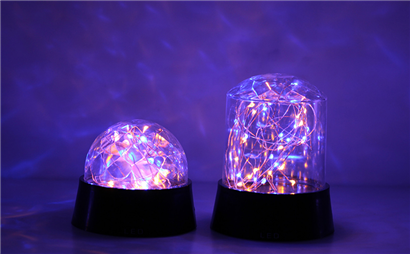Infrared LED bead phototherapy is a treatment technique that has gradually become popular in recent years. It uses specific wavelengths of infrared light to irradiate the skin, producing a series of positive effects on the skin and body through photobiological effects. This therapy has broad application prospects in the fields of medicine, beauty, and rehabilitation. So, then,Infrared LED beadsWhat is the power of phototherapy?
We need to understand some basic concepts about phototherapy. Phototherapy refers to the use of light sources with specific wavelengths to irradiate the human body, achieving the goal of treating, rehabilitating, or improving skin conditions. The efficacy of phototherapy depends on various factors, including the wavelength, intensity, irradiation time, and irradiation area of the light source. Among them, the power of the light source is an important parameter that directly affects the effectiveness and safety of phototherapy.
Infrared LED beads, as a light source for phototherapy, typically have a wavelength between 700nm and 1000nm. Infrared light in this wavelength range has good penetration and can penetrate deep into the skin, promoting blood circulation, increasing collagen synthesis, relieving pain and inflammation, etc. Therefore, infrared LED light bulb phototherapy is widely used in the treatment and rehabilitation process of various diseases.
What is the power required for infrared LED bead phototherapy? There is no fixed answer to this question, as different application scenarios and patient needs may vary. Generally speaking, the power of infrared LED chips can range from a few milliwatts to tens of watts. In practical applications, doctors or therapists will choose the appropriate light source power based on the patient's specific condition, such as disease type, severity, treatment site, etc.
For mild skin problems such as acne, pigmentation, etc., lower power infrared LED bulbs may be sufficient. In this case, the power of the light source may range from a few milliwatts to several hundred milliwatts. This power level is sufficient to stimulate skin cell regeneration, promote skin repair, and avoid potential skin damage caused by excessive energy input.
For some more serious diseases, such as arthritis, muscle pain, etc., high-power infrared LED bulbs may be needed for treatment. In this case, the power of the light source may reach several watts or even tens of watts. High power infrared light can penetrate deeper into skin tissue and reach the affected area, thereby achieving better therapeutic effects. However, it should be noted that high-power phototherapy also comes with certain risks, such as overheating, burns, etc. Therefore, when performing high-power phototherapy, it is essential to strictly follow the operating procedures to ensure patient safety.
In addition to disease treatment, infrared LED light bulb phototherapy can also be used in the field of beauty. For example, it can be used for anti-aging, firming the skin, reducing wrinkles, and more. In these applications, the power of infrared LED beads is usually low, typically ranging from a few milliwatts to several hundred milliwatts. Low power phototherapy can stimulate skin cells to produce more collagen and elastic fibers, thereby improving skin texture and appearance. Meanwhile, low-power phototherapy is also milder and suitable for long-term use.
There is no fixed standard value for the power of infrared LED light bulb phototherapy, which depends on the specific application scenario and patient needs. When choosing infrared LED bulbs for phototherapy, the appropriate light source power should be determined based on the patient's specific situation, and treatment should be carried out under the guidance of a professional doctor or therapist. At the same time, in order to ensure the safety and effectiveness of phototherapy, the following points need to be noted:
Choose infrared LED chips produced by legitimate manufacturers to ensure product quality and stable performance.
Before undergoing phototherapy, patients should undergo a comprehensive evaluation to understand their medical history, allergy history, and other information to avoid unnecessary risks.
Adjust parameters such as light source power, irradiation time, and irradiation distance according to the specific situation of the patient to achieve the best treatment effect.
During the phototherapy process, closely observe the patient's reaction. If discomfort or abnormal conditions occur, stop treatment in a timely manner and seek professional help.
Regularly maintain and inspect phototherapy equipment to ensure its normal operation, safety, and reliability.
With the development of technology and the deepening of research, infrared LED bead phototherapy, as an emerging treatment technology, is gradually showing its unique advantages and application potential. I believe that in the future, it will bring good news to more patients.

Waterproof and moisture-proof structure of infrared transmitting and receiving tube

Sensing LED beads: illuminating the new realm of future technology!

Piranha lantern bead creativity, light up your whimsical ideas!

Sensing LED beads: lighting up the light of future wisdom!
Address: 5th Floor, Building 12, Changfeng Industrial Park, Dongkeng, Fenghuang Street, Guangming District, Shenzhen, Guangdong Province
Phone: 17727428719 (Manager Liu)
Email: led_best@163.com
Copyright © 2023 Tianshi All Rights Reserved 粤ICP备2021179733号